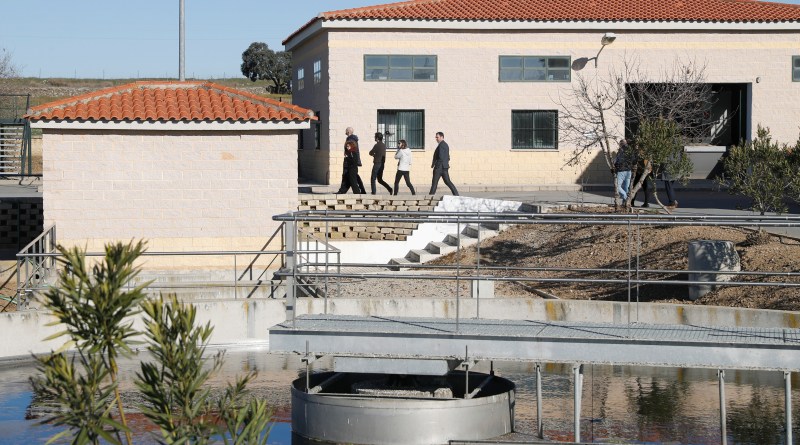News & Events
How to convert rural wastewater into fertilizers for the agricultural industry

06 | 10 | 2021
- Ceit Technology Centre has applied smart control technologies within the framework of the European CircRural 4.0 initiative to boost energy efficiency and the circular economy of wastewater treatment plants in rural areas
- The control solution makes it possible to give a new life to residues generated in the course of wastewater treatment and has been implemented at two facilities in Spain and Portugal
- The project has been funded by the Interreg Sudoe EU programme and involves the collaboration of universities, technology centres and companies from the water sector
The integration of digital technologies in wastewater treatment plants (WWTPs) and the centralized treatment of residues may help to convert the residues generated at these facilities into biogas and fertilizers and hence boost the circular economy in the rural milieu. This involves proposing a different solution to those currently in use in large urban wastewater treatment plants, as the latter are subject to major financial and logistic restrictions in ensuring their direct application to the rural milieu.
To do this, Ceit Technology Centre, a member of the Basque Research and Technology Alliance (BRTA), has been at the helm of the European CircRural 4.0 project with a view to developing innovative, low-cost solutions that may help to reduce the technology gap between wastewater treatment plants in urban and rural areas. At the same time, this may enable the energy efficiency and circular economy of these facilities to be encouraged, in tune with what is referred to as the European Green Deal.
The solutions developed by Ceit have been successfully implemented at two real wastewater treatment plants located in two regions with a high level of agricultural productivity: the WWTP at Fregenal de la Sierra in Badajoz (Spain) and the one at Charneca in the eastern region of Lisbon (Portugal).
Smart control technologies for rural WWTPs
In view of the large city plants in which recovery of resources and energy efficiency is being tackled using new treatment technologies, the project has proposed an innovative solution for the rural milieu that may be fitted immediately over existing infrastructure, thus reducing costs, improving the energy efficiency of WWTPs and encouraging the recovery of resources.
Thus, the Data Analysis and Information Management Group at Ceit has been put in charge of overseeing the development of a smart control solution to eliminate phosphorous bacteria in small treatment plants.
“We have developed a real-time smart control algorithm which, via online measurements of ammonia, nitrates and solids, automatically regulates ventilation and sludge production in order to reduce energy consumption and promote the biological elimination of phosphorous”, Ion Irizar, co-director of the Ceit Group, explains.
The results obtained by the WWTP at Charneca conclude that the control solution developed by Ceit might lead to reductions in energy consumption of over 25% and biological recovery yields of phosphorous of around 75%.
Giving a new life to residue
The Water and Residue Group at Ceit has also been responsible for constructing the pilot prototype for new centralized sludge treatment technology in order to produce biogas and fertilizers. This prototype has been fitted at the WWTP at Fregenal de la Sierra (Badajoz), thus enabling the residues generated via water treatment processes – such as phosphorous and nitrogen - to take on a new life.
A dry digestion anaerobic treatment process has been proposed to develop this facility which, apart from treating sludge from rural treatment plants, also takes advantage of residues obtained from the food and agriculture industry so as to thus increase recovery levels of resources and improve the economic performance of the facility.
“This process means a major advantage for rural plants where all the sludge generated is dehydrated prior to being transported. From this dry digestion treatment, the liquid fraction of the treated or digested sludge may be extracted, from which the phosphorous and nitrogen may in turn be extracted. Moreover, the solid part can also be used as organic manure to improve the chemical, physical and biological features of soil under cultivation”, Irizar stresses.
Funded by the European Interreg Sudoe programme, the CircRural 4.0 initiative has involved a consortium made up of universities, technology centres and water companies from Spain, France and Portugal as follows: the University of Toulouse, the New University of Lisbon (NOVA), CTAEX (Badajoz), ITG (A Coruña), Ceit (Donostia), Promedio (Badajoz), Aguas del Tajo Atlántico (Lisbon) and Reseau31 (Toulouse). The EFE Agency has also collaborated on communicative work for the project.